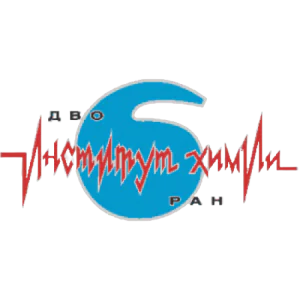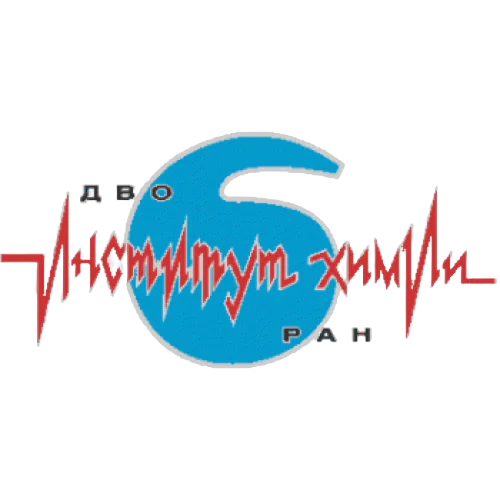Aleksandr A Khrebtov
PhD in Chemistry
Publications
10
Citations
60
h-index
6
Education
Far Eastern Federal University
2018 — 2022,
Postgraduate, Chemical technology
Far Eastern Federal University
2016 — 2018,
Master, Chemical technology
Far Eastern Federal University
2012 — 2016,
Bachelor, Chemical technology
Found
Nothing found, try to update filter.
Found
Nothing found, try to update filter.
Found
Nothing found, try to update filter.
Total publications
10
Total citations
60
Citations per publication
6
Average publications per year
1.25
Average coauthors
3.7
Publications years
2017-2024 (8 years)
h-index
6
i10-index
2
m-index
0.75
o-index
8
g-index
7
w-index
1
Metrics description
h-index
A scientist has an h-index if h of his N publications are cited at least h times each, while the remaining (N - h) publications are cited no more than h times each.
i10-index
The number of the author's publications that received at least 10 links each.
m-index
The researcher's m-index is numerically equal to the ratio of his h-index to the number of years that have passed since the first publication.
o-index
The geometric mean of the h-index and the number of citations of the most cited article of the scientist.
g-index
For a given set of articles, sorted in descending order of the number of citations that these articles received, the g-index is the largest number such that the g most cited articles received (in total) at least g2 citations.
w-index
If w articles of a researcher have at least 10w citations each and other publications are less than 10(w+1) citations, then the researcher's w-index is equal to w.
Top-100
Fields of science
|
1
2
3
4
5
|
|
|
Atomic and Molecular Physics, and Optics
|
Atomic and Molecular Physics, and Optics, 5, 50%
Atomic and Molecular Physics, and Optics
5 publications, 50%
|
|
Electronic, Optical and Magnetic Materials
|
Electronic, Optical and Magnetic Materials, 2, 20%
Electronic, Optical and Magnetic Materials
2 publications, 20%
|
|
Spectroscopy
|
Spectroscopy, 2, 20%
Spectroscopy
2 publications, 20%
|
|
Analytical Chemistry
|
Analytical Chemistry, 2, 20%
Analytical Chemistry
2 publications, 20%
|
|
Instrumentation
|
Instrumentation, 2, 20%
Instrumentation
2 publications, 20%
|
|
Materials Chemistry
|
Materials Chemistry, 1, 10%
Materials Chemistry
1 publication, 10%
|
|
General Chemistry
|
General Chemistry, 1, 10%
General Chemistry
1 publication, 10%
|
|
Organic Chemistry
|
Organic Chemistry, 1, 10%
Organic Chemistry
1 publication, 10%
|
|
Biochemistry
|
Biochemistry, 1, 10%
Biochemistry
1 publication, 10%
|
|
Physical and Theoretical Chemistry
|
Physical and Theoretical Chemistry, 1, 10%
Physical and Theoretical Chemistry
1 publication, 10%
|
|
General Medicine
|
General Medicine, 1, 10%
General Medicine
1 publication, 10%
|
|
Biophysics
|
Biophysics, 1, 10%
Biophysics
1 publication, 10%
|
|
General Chemical Engineering
|
General Chemical Engineering, 1, 10%
General Chemical Engineering
1 publication, 10%
|
|
Process Chemistry and Technology
|
Process Chemistry and Technology, 1, 10%
Process Chemistry and Technology
1 publication, 10%
|
|
Condensed Matter Physics
|
Condensed Matter Physics, 1, 10%
Condensed Matter Physics
1 publication, 10%
|
|
Polymers and Plastics
|
Polymers and Plastics, 1, 10%
Polymers and Plastics
1 publication, 10%
|
|
1
2
3
4
5
|
Journals
|
1
2
|
|
|
Spectrochimica Acta - Part A: Molecular and Biomolecular Spectroscopy
2 publications, 20%
|
|
|
Optics and Spectroscopy (English translation of Optika i Spektroskopiya)
2 publications, 20%
|
|
|
Russian Journal of Physical Chemistry A
1 publication, 10%
|
|
|
Journal of Luminescence
1 publication, 10%
|
|
|
IOP Conference Series: Materials Science and Engineering
1 publication, 10%
|
|
|
Dyes and Pigments
1 publication, 10%
|
|
|
High Energy Chemistry
1 publication, 10%
|
|
|
Polymer
1 publication, 10%
|
|
|
1
2
|
Citing journals
|
2
4
6
8
10
|
|
|
High Energy Chemistry
10 citations, 16.67%
|
|
|
Russian Journal of Physical Chemistry A
7 citations, 11.67%
|
|
|
Dyes and Pigments
7 citations, 11.67%
|
|
|
Spectrochimica Acta - Part A: Molecular and Biomolecular Spectroscopy
6 citations, 10%
|
|
|
Journal of Molecular Liquids
4 citations, 6.67%
|
|
|
Polymer
4 citations, 6.67%
|
|
|
Химия высоких энергий
3 citations, 5%
|
|
|
Journal of Luminescence
2 citations, 3.33%
|
|
|
Journal of Molecular Structure
2 citations, 3.33%
|
|
|
Optics and Spectroscopy (English translation of Optika i Spektroskopiya)
2 citations, 3.33%
|
|
|
Журнал физической химии
2 citations, 3.33%
|
|
|
Industrial Crops and Products
1 citation, 1.67%
|
|
|
Physical Chemistry Chemical Physics
1 citation, 1.67%
|
|
|
Journal of Materials Chemistry C
1 citation, 1.67%
|
|
|
Polymer Science - Series C
1 citation, 1.67%
|
|
|
The Analyst
1 citation, 1.67%
|
|
|
Journal of the European Ceramic Society
1 citation, 1.67%
|
|
|
Scientific Reports
1 citation, 1.67%
|
|
|
Journal of Photochemistry and Photobiology A: Chemistry
1 citation, 1.67%
|
|
|
European Journal of Organic Chemistry
1 citation, 1.67%
|
|
|
Journal of Fluorescence
1 citation, 1.67%
|
|
|
Высокомолекулярные соединения С
1 citation, 1.67%
|
|
|
2
4
6
8
10
|
Publishers
|
1
2
3
4
5
|
|
|
Elsevier
5 publications, 50%
|
|
|
Pleiades Publishing
4 publications, 40%
|
|
|
IOP Publishing
1 publication, 10%
|
|
|
1
2
3
4
5
|
Organizations from articles
|
2
4
6
8
10
|
|
|
Institute of Chemistry of the Far Eastern Branch of the Russian Academy of Sciences
10 publications, 100%
|
|
|
Far Eastern Federal University
10 publications, 100%
|
|
|
Institute for Automation and Control Processes of the Far Eastern Branch of the Russian Academy of Sciences
1 publication, 10%
|
|
|
2
4
6
8
10
|
Countries from articles
|
2
4
6
8
10
|
|
|
Russia
|
Russia, 10, 100%
Russia
10 publications, 100%
|
|
2
4
6
8
10
|
Citing organizations
|
2
4
6
8
10
12
14
|
|
|
Institute of Chemistry of the Far Eastern Branch of the Russian Academy of Sciences
14 citations, 23.33%
|
|
|
Far Eastern Federal University
12 citations, 20%
|
|
|
Organization not defined
|
Organization not defined, 3, 5%
Organization not defined
3 citations, 5%
|
|
A.N.Nesmeyanov Institute of Organoelement Compounds of the Russian Academy of Sciences
3 citations, 5%
|
|
|
Photochemistry Center
3 citations, 5%
|
|
|
Kurchatov Complex of Crystallography and Photonics of NRC «Kurchatov Institute»
3 citations, 5%
|
|
|
Enikolopov Institute of Synthetic Polymeric Materials of the Russian Academy of Sciences
2 citations, 3.33%
|
|
|
Institute for Automation and Control Processes of the Far Eastern Branch of the Russian Academy of Sciences
2 citations, 3.33%
|
|
|
Mendeleev University of Chemical Technology of Russia
2 citations, 3.33%
|
|
|
Universidad de los Andes, Colombia
2 citations, 3.33%
|
|
|
Moscow Institute of Physics and Technology
1 citation, 1.67%
|
|
|
National Research Nuclear University MEPhI
1 citation, 1.67%
|
|
|
Emanuel Institute of Biochemical Physics of the Russian Academy of Sciences
1 citation, 1.67%
|
|
|
National Research Centre "Kurchatov Institute"
1 citation, 1.67%
|
|
|
Fuzhou University
1 citation, 1.67%
|
|
|
Nanjing University of Posts and Telecommunications
1 citation, 1.67%
|
|
|
Nanjing Forestry University
1 citation, 1.67%
|
|
|
University of Southern California
1 citation, 1.67%
|
|
|
Shandong University of Technology
1 citation, 1.67%
|
|
|
Institute of Macromolecular Chemistry Petru Poni Romanian Academy
1 citation, 1.67%
|
|
|
Gheorghe Asachi Technical University of Iasi
1 citation, 1.67%
|
|
|
2
4
6
8
10
12
14
|
Citing countries
|
2
4
6
8
10
12
14
16
18
|
|
|
Russia
|
Russia, 17, 28.33%
Russia
17 citations, 28.33%
|
|
China
|
China, 4, 6.67%
China
4 citations, 6.67%
|
|
Country not defined
|
Country not defined, 3, 5%
Country not defined
3 citations, 5%
|
|
Colombia
|
Colombia, 2, 3.33%
Colombia
2 citations, 3.33%
|
|
USA
|
USA, 1, 1.67%
USA
1 citation, 1.67%
|
|
Romania
|
Romania, 1, 1.67%
Romania
1 citation, 1.67%
|
|
2
4
6
8
10
12
14
16
18
|
- We do not take into account publications without a DOI.
- Statistics recalculated daily.
This section displays the profiles of scientists registered on the platform. To display the full list, invite your colleagues to register.
Александр Андреевич Хребтов, Елена Валерьевна Федоренко, Любовь Андреевна Лим, Анатолий Григорьевич Мирочник
RU2747603C2,
2021
Александр Андреевич Хребтов, Елена Валерьевна Федоренко, Анатолий Григорьевич Мирочник
RU2790680,
2023
Company/Organization
Position
Senior Lecturer
Employment type
Full time
Years
2022 —
present
Company/Organization
Position
Junior Researcher
Employment type
Part time
Years
2020 —
present
Company/Organization
Position
Lecturer
Employment type
Part time
Years
2019 —
2022


































